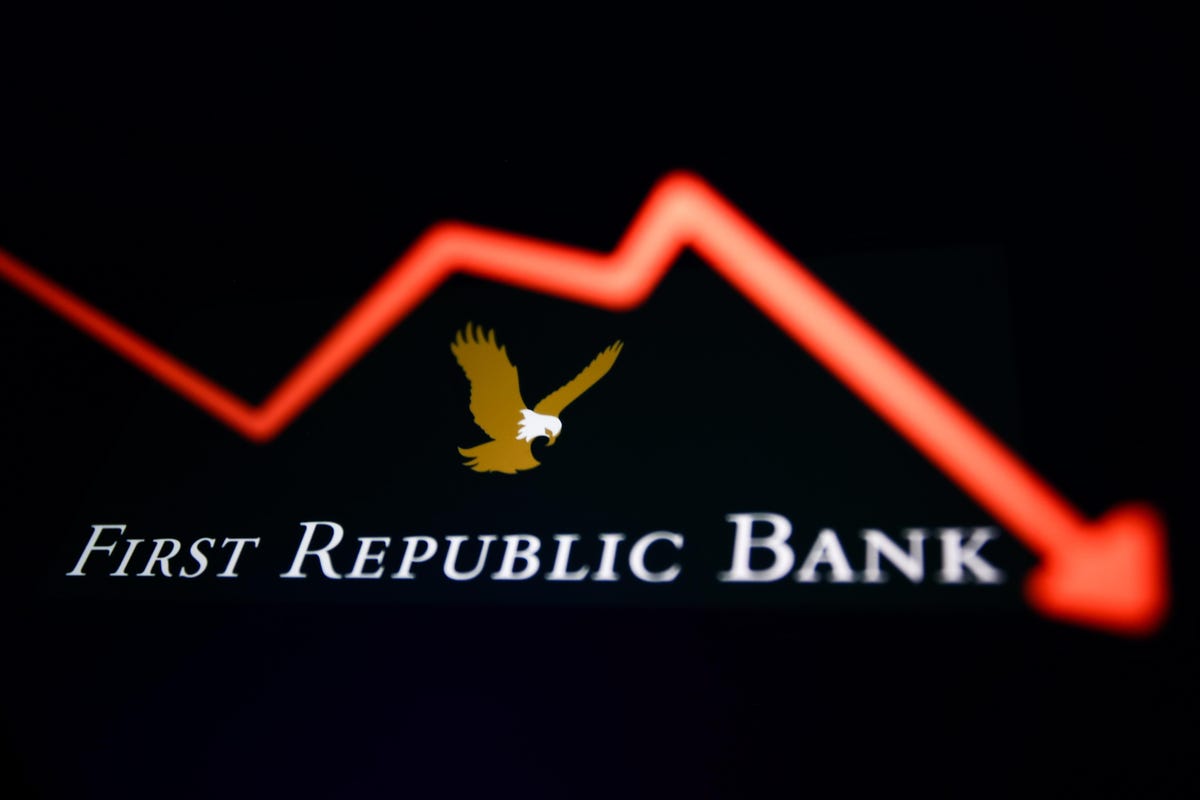First Republic Bank’s stock price has plummeted 87% since March 8, when the market learned of Silicon Valley Bank’s impending demise. This is not just a case of contagion. First Republic Bank
FRC
Understandably, many investors will want to know what the bank’s earnings are. Without good earnings, one cannot expect capital or liquidity to be healthy. In addition, however, I urge you to look at asset quality, funding, liquidity, and capital ratios. Together, these ratios will give us a better picture of where this bank stands.
Assets
First Republic’s significant loan growth over the last couple of years has been signaling concern for several years. The bank’s loan portfolio grew almost 24% in 2022. At the end of 2022, three institutions in a similar asset range to First Republic Bank were Citizens Financial Group
CFG
VB
The bank’s loan loss allowance for impaired loans was almost at 650% at the end of 2022, significantly higher than its 2021 level of 457%. The advanced economy average in 2022 was 90%.
Also of concern is that First Republic has a concentration in its assets, primarily in mortgages and municipal securities. With the significant rise in interest rates since last year, if those assets were marked-to-market, they probably have significant losses. According to Fitch Ratings analysts, as of the last quarter of 2022, the fair market value of First Republic’s securities and loans are below their book value. Moreover, “the bank’s securities and loans carried unrealized losses totaling 16.3% and 13.3%, respectively, relative to amortized cost.”
Funding And Liquidity
First Republic relies almost entirely on deposits for its funding. This March, when many depositors fled, the bank had to start relying more on more expensive wholesale borrowings, primarily from the Federal Reserve’s Discount Window. On March 16, 11 of the largest U.S. banks deposited $30 billion at First Republic to rescue it. First Republic has to pay interest on these deposits; they carry an initial term of 120 days at market rates. As Fitch Ratings analysts explained when they downgraded First Republic on March 22 to a ‘B’ rating, “while this injection created necessary headroom from a liquidity perspective, the bank’s new funding profile is relatively costly and is viewed as the primary ratings constraint.”
If the bank has to sell assets— its loan and securities— given their current market value, this could pressure the bank to increase capital significantly. Trying to issue equity or subordinated debt takes time and would be costly.
Earnings
Fitch estimates that due to First Republic’s higher cost of funds, it “is currently operating at a net loss that is not sustainable over the longer term absent a balance sheet restructuring.” At the end of last year, the bank had the smallest operating profit as a percent of its risk-weighted assets.
Capital
At the end of 2022, First Republic was allocating less common equity to its risk-weighted assets than its three other peers. And its equity as a percent of total assets was the lowest. Its total capital ratio was also the lowest in the group. Capital is important because it helps banks sustain unexpected losses. In a few hours, we will all know whether First Republic will have to increase capital to be a healthier bank.
Other Recent Articles By This Author:
Regional Banks’ Financial Results Fail To Impress Investors
What To Watch For With U.S. Regional Banks This Week
Big U.S. Banks Are Preparing For An Impending Recession
Investors Eyes Should Be On Leveraged Finance Markets
Deutsche Bank Should Disclose Its Current Liquidity Levels To Investors
From Ferdinand Marcos To Russian Oligarchs, Troubled Credit Suisse Is A Repeat Offender
How Trump’s Deregulation Sowed the Seeds for Silicon Valley Bank’s Demise
Warning Signals About Silicon Valley Bank Were All Around Us
High Interest Rates Will Continue To Challenge Most Sectors Of The Economy
Leveraged Loan Default Volume In The U.S. Has Tripled This Year
Probability Of Default Is Rising For High Yield Bonds And Leveraged Loans
The U.S. Leveraged Finance Market Is At A Record $3 Trillion
Read the full article here


